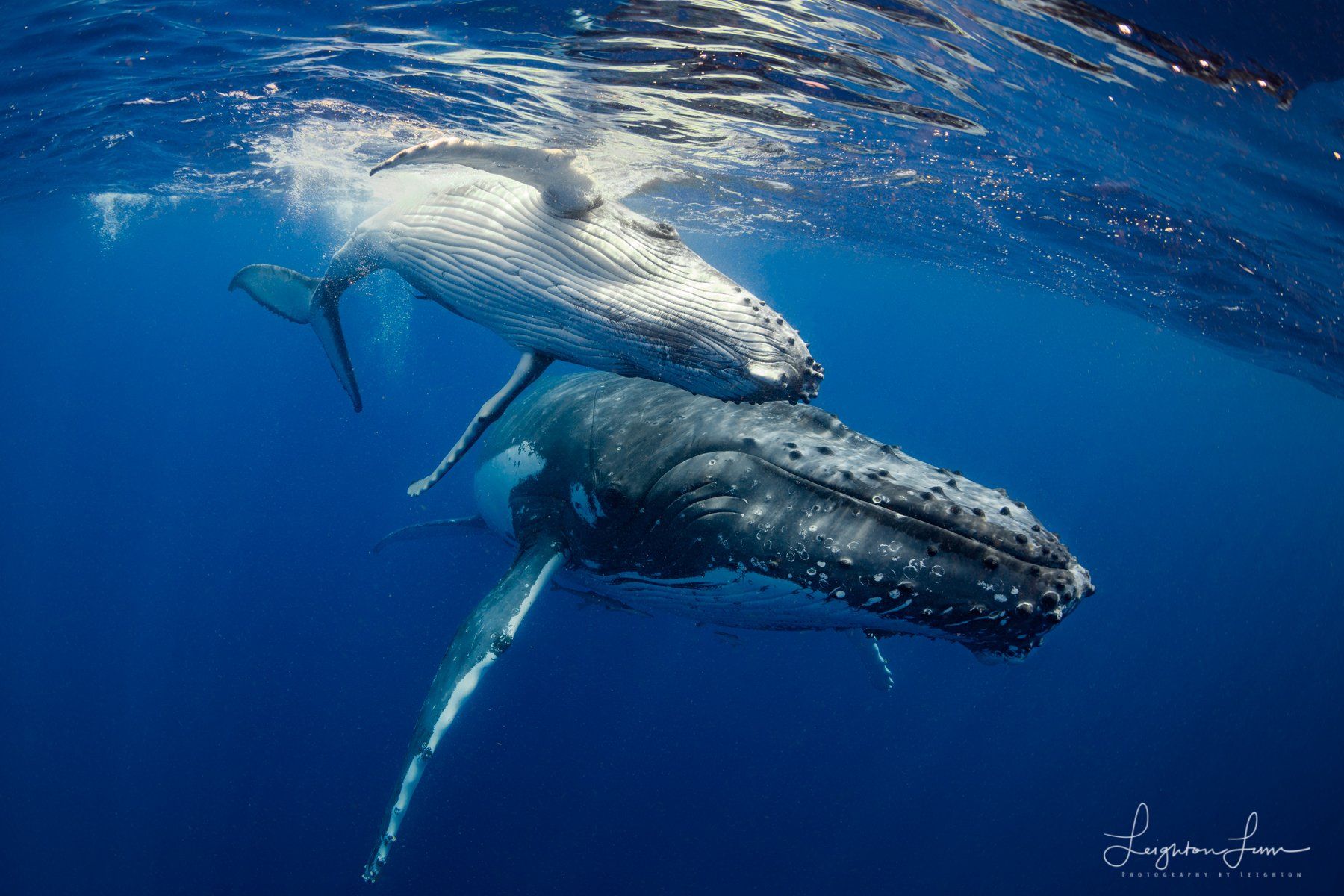WHY HUMPBACK?
Whales are warm-blooded, air-breathing mammals that give birth to live young and live in the ocean. Whales and dolphins are collectively known as cetaceans and divided into two suborders - Mysticeti (Baleen Whales) and Odontoceti (Toothed Whales).
The Whales we dive with are south pacific Humpback Whales (Megaptera novaeangliae) which follow annual migration routes between the southern polar Antarctic waters during summer and various tropical areas during winter.
Humpbacks are baleen Whales, with hundreds of dark baleen "plates" hanging from each side of their upper jaw with which to filter huge amounts of water for food. Each adult can eat over 1300 kg (about 1.5 tons) of krill (small shrimp-like crustaceans) and small fish a day!
Adults can grow to over 18 m (about 60 feet) in length, about 50 tons in weight and to an estimated 95 years of age.
The calves when born are usually 3-4.5 m (about 10-15 feet) in length and can weigh over 900 kg (about 1 ton). Nursing at frequent intervals on their mother's rich milk when young, they gain around 1 kg (2.2 lbs.) every hour. During this nursing period in tropical waters the mothers can lose up to 1/3 of their body weight as they do not actively feed other than opportunistically if they chance upon a shoal of pilchards or the like.
Humpback calves do not actually suckle from their mothers but have the rich stream of milk squirted into their mouths when they are quite close, and are weaned onto solid food after about a year.
Whilst adult females can produce a new calf every year, the new mothers avoid mating until their existing calf is one year old - this allows the attentive mother to look after this calf through a two year period, affording it a much better chance of survival.
Humpback whales have a small dorsal fin located nearly two-thirds of the way down their back, and their backs steeply arch as they dive – this is how the humpback got its name and it helps whale watchers distinguish them from other species.
Humpback whales are a baleen whale and are renowned for their spectacular behaviour. Humpbacks will leap out of the water, roll in the air with their huge pectoral fins outstretched like wings, and crash noisily back into the water. This is called breaching and scientists are still trying to figure out why humpbacks do this. They might do it to clean pests from their skin or they might simply do it for fun.
EXTRA FACTS
Weight Adults: up to 50 tonnes; Calves: 2 tonnes at birth
Gestation: 11 to 11.5 months
Weaning age: up to 11 months
Calving interval: 2 to 3 years
Physical maturity age: 12 to 15 years
Sexual maturity age: 4 to 10 years
Mating season: June to October
Calving season: June to October
Cruising speed: 8km/h
Max burst speed: 45km/h
Blow pattern: Small and bushy, up to 4m
Protected Since 1965


